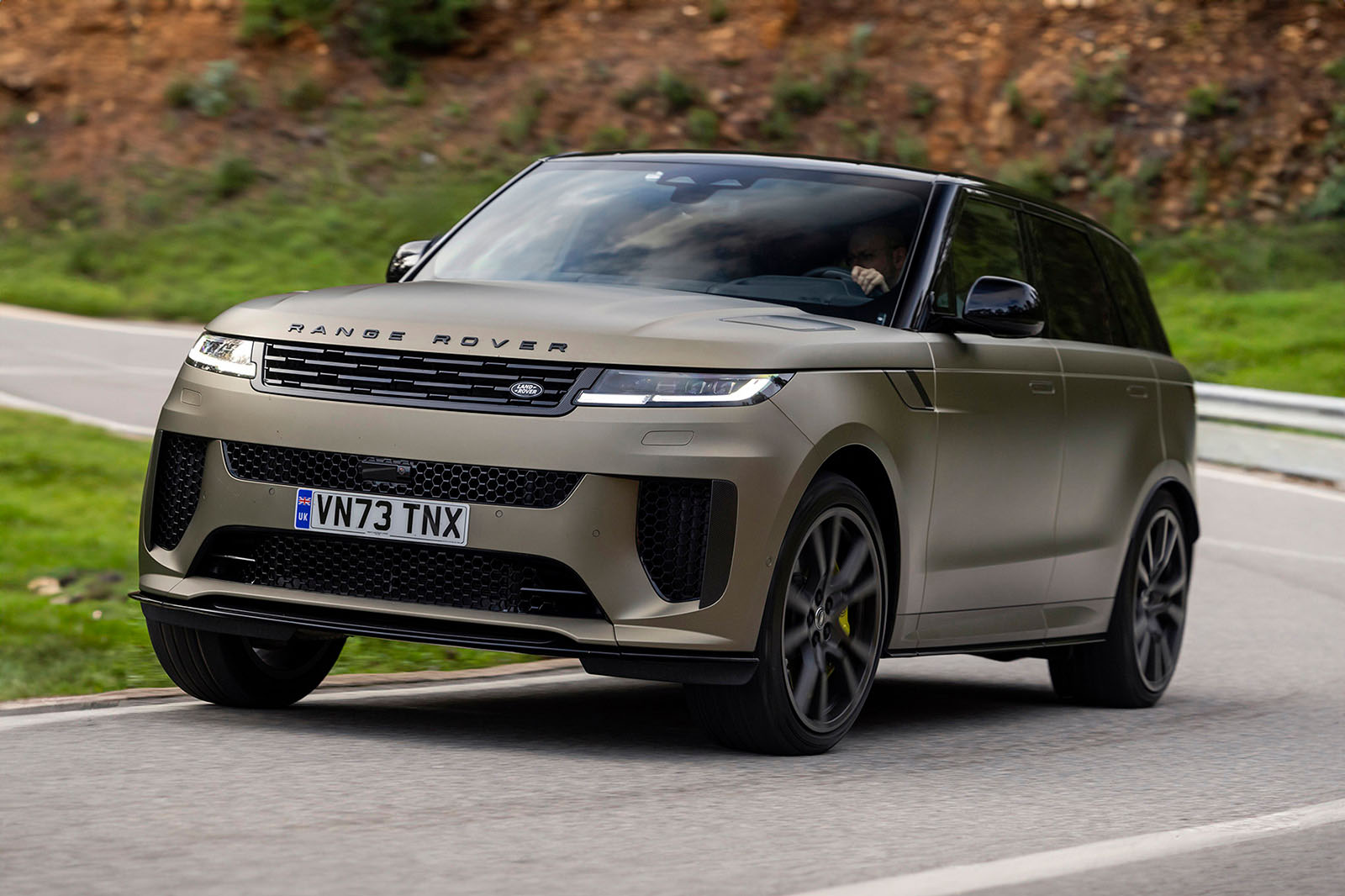Push harder on the road and some of that sense of dynamic sophistication can ebb away a little, the car’s electronic stability controls seeming peculiarly underdeveloped by JLR’s typically high standards (see ‘Track notes’). But generally, it is precisely that easy-going pleasure you would hope it might be.
The SV variant is a different proposition. Not just in ethos, but also in hardware, owing to those hydraulic dampers which can control body movements to such a tight degree. In its Comfort mode, though, it doesn’t always try – on a straight road, it slackens them off perhaps too much for our tastes, at least on an undulating straight road, where it lolls a little, at odds with the sharpness of its steering, quicker than the standard car‘s, and a lack of body roll elsewhere. We preferred the car in Dynamic suspension mode, which reins those subtle movements in, but doesn’t seem to impact the ride quality.
Drive faster, too, and the SV is a hugely different car to the standard Range Rover Sport. JLR says that it can carry up to 1.1g of lateral grip even on its standard-fit all-season tyres, and it can do remarkable things. It feels like it pivots around its middle, it’s more agile than a two and a half tonne car has any right to be, and even on a circuit (overseas, not at Millbrook as described below for the D300) it’s genuinely entertaining.
Comfort and isolation
The D300 Range Rover Sport registered just 60dBA of cabin noise at a 50mph cruise, on a pretty average dry autumn day on the Millbrook high-speed bowl. On the same stretch (albeit each in slightly different conditions), an Audi Q8 and BMW X5, both six-cylinder diesels, each registered 2dBA more, and a Mercedes S580e was only 1dBA quieter. Both SUV rivals were also noisier than the Range Rover Sport at idle by an even wider margin.
Clearly, the work that has gone into boosting this car’s cruising manners is both deep-running and effective. Our test car’s optional 22in alloy wheels made its rolling refinement a shade less immaculate, and it occasionally clunked a little over sharper intrusions, but it always kept road surface hum to a minimum. If you want to configure your car for the best possible ride, we dare say you could simply pick a smaller rim and end up with something very special.
The front seats are broadly and easily adjustable, easy to slide into and very comfortable and they grant excellent forwards visibility. Rearward visibility can be boosted by Land Rover’s optional ClearView video rear-view mirror, which opens up your field of vision behind you, and also compensates for low light.
Track notes
Our D300 test car dispatched the steepest inclines of the Millbrook Hill Route with performance to spare, containing body movements well. But there were a few instances, at the limit of grip, where the electronic stability control intervened particularly harshly to keep it on line, and once when that intervention actually forced the car closer to exiting the road than it would have been otherwise.
The DSC system works effectively up to a point. The car is secure under power but can slide around a little on a trailing throttle if you are carrying plenty of speed. Its movements are well telegraphed and would be instinctively controllable. But the DSC tends to work the front brakes particularly harshly, and quite early, to rein in yaw movements, and to resist what it may perceive as the threat of impending rollover – and doing that can be problematic if you’re making steering corrections yourself. There is a deactivation mode but it’s never fully off and it can intervene even when you are not expecting it to.

